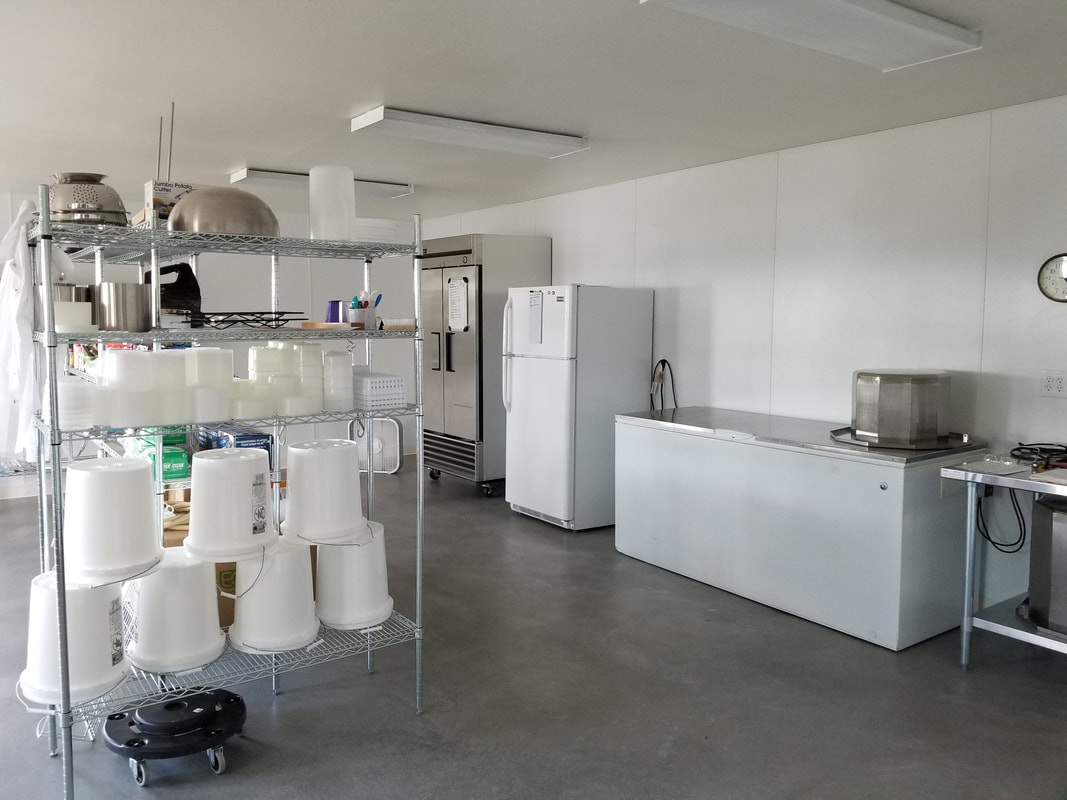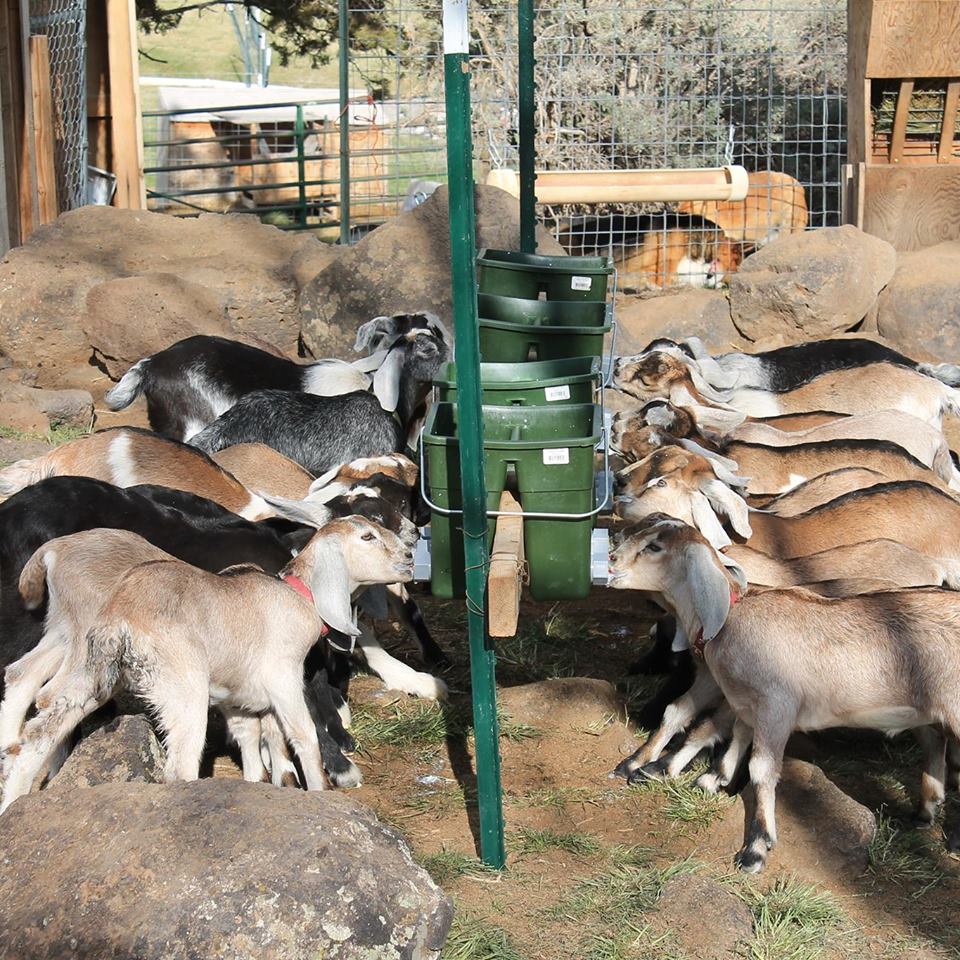|
Lynae has been making cheese at home for nearly 13 years but just this past year the family made the move to build their creamery, obtain their certifications and “go for it”, said Lynae.
While their does have delivered them over 20 kids this season Lynae says they are hoping to build their herd; each year selling off the bucks and keeping the does in order to expand their cheese production. Making cheese is both an art and a science. Lynae and her family believe in the principle that the healthiest and happiest animals produce the best products and that’s a principle that they follow, both on their farm and in their cheese production. There are six important steps in cheese making: acidification, coagulation, separating curds and whey, salting, shaping, and ripening. The nicer and the fresher the milk you use, the more delicious your cheese will be so of course, starting with fresh goats milk from goats raised locally, just doesn’t get any better. * Starter culture is added to milk to change lactose (milk sugar) into lactic acid. This process changes the acidity level of the milk and begins the process of turning milk from a liquid into a solid. * Rennet is added to further encourage the milk to solidify. * Curds are cut using a knife or a tool that resembles a rake. Cutting the curds further encourages them to expel liquid or whey. Generally, the smaller the curds are cut, the harder the resulting cheese will be. Soft cheeses like Camembert or Brie are hardly cut at all. Harder cheeses like Cheddar and Gruyere are cut into a very fine texture. For these harder cheeses, the curds are further manipulated by cheddaring and/or cooking. Cooking the curd changes its texture, making it tender rather than crumbly. * Salt adds flavor and also acts as a preservative so the cheese does not spoil during long months or years of aging also helps a natural rind to form on the cheese. * The cheese is put into a basket or a mold to form it into a specific shape. During this process, the cheese is also pressed with weights or a machine to expel any remaining liquid. * Ripening is the process by which the cheese ages until it reaches optimal ripeness. During this process, the temperature and humidity where the cheese ages is closely monitored. Most people know goat cheese as the creamy soft cheese sold in logs at the supermarket but you might want to think twice before passing up the chance to taste some of the tasty cheeses made locally with farm fresh milk. Grand Mesa Creamery offers soft spreadable Chevre cheese with some of their most popular flavors being: Toasted Garlic, Dilly Dilly, Chipotle, Habanero Lime and Herb de Provence. You’ll find their Bloomy Rinds, Cesar's Edge Camembert and Black Canyon, are known for their white color and mushroomy flavor of the rind, which is edible (and delicious!). Everyone loves cheese curds and two of their most popular flavors are Dill and Chipotle but if Hard Cheese is your preference, Grand Mesa Creamery offers Roubideau Caprino, Cotswold type cheese with chives and onion, Gouda and Smoked Gouda. The cheeses made at Grand Mesa Creamery are available at the Montrose Farmers Market, Ridgeway Farmers Market, Cross Orchards in Grand Junction and more locations coming soon! Follow them on Facebook/grandmesacreamery or contact them at: 970-856-7040 to find out about their CSA share available through Altreia Farmstead. Remember…the most obvious reason to eat local, sustainably produced cheese is that everything from texture to taste is simply delicious! “At Grand Mesa Creamery, the Rogers’ believe in sustainable agriculture, and a humane natural approach to animal husbandry. It is our desire to create a sustainable lifestyle and business built on the cornerstones of respect for the consumer, land, animals, and the strength of commitment in local communities. By caring for the land and surroundings, our customers and community help us produce the finest products possible. We know each of our customers will experience the satisfaction of building a stronger community by knowing where their food comes from and the family that produces it.” Lynae Rogers |

